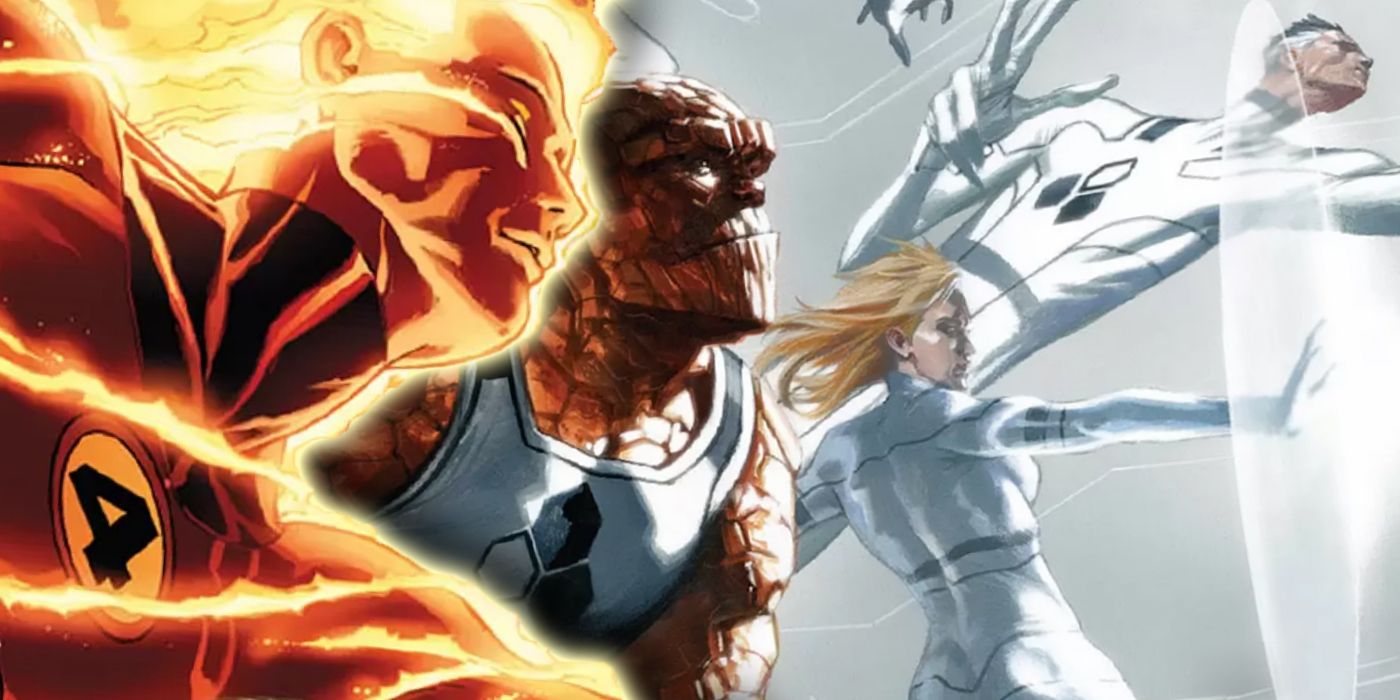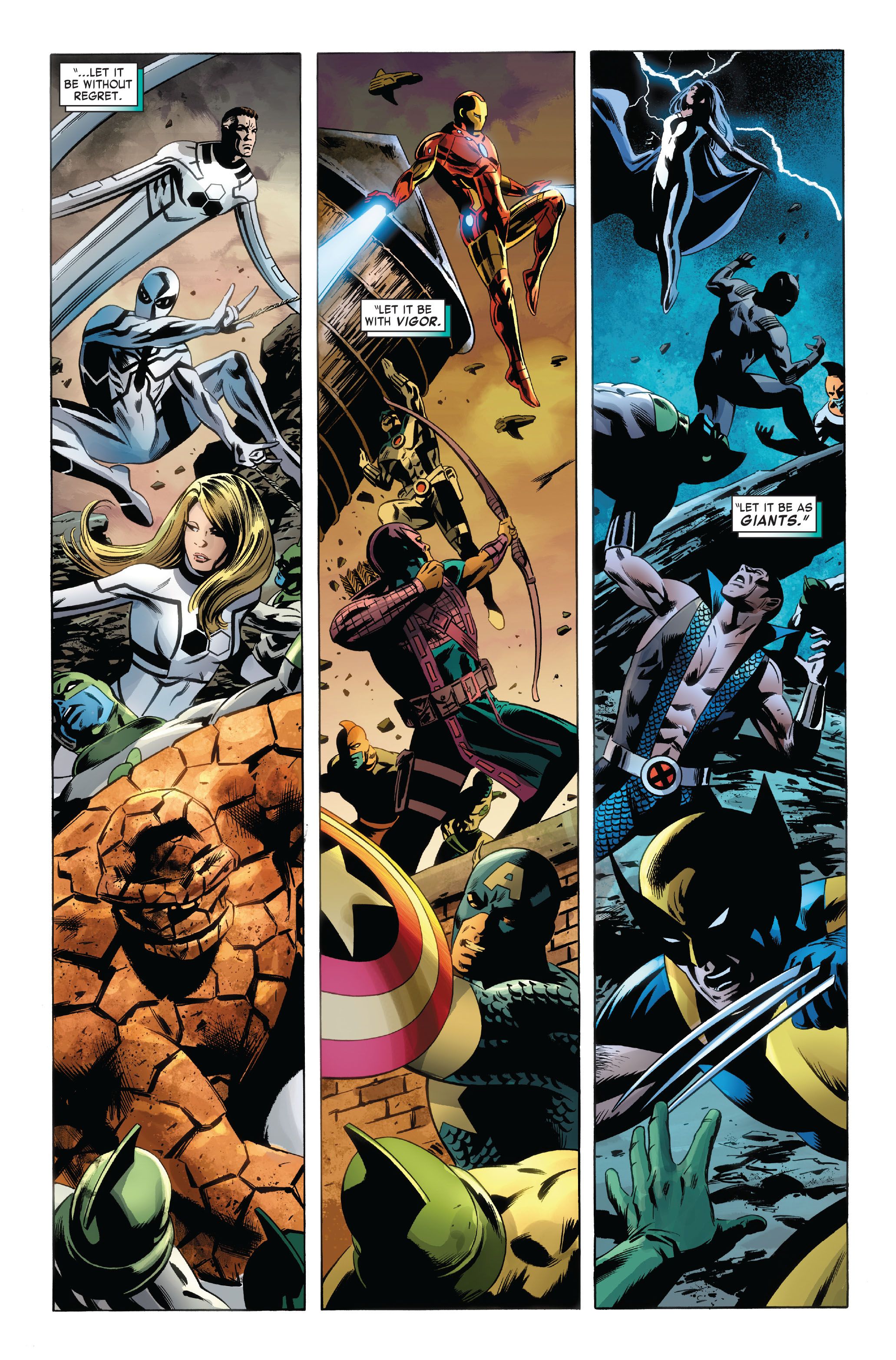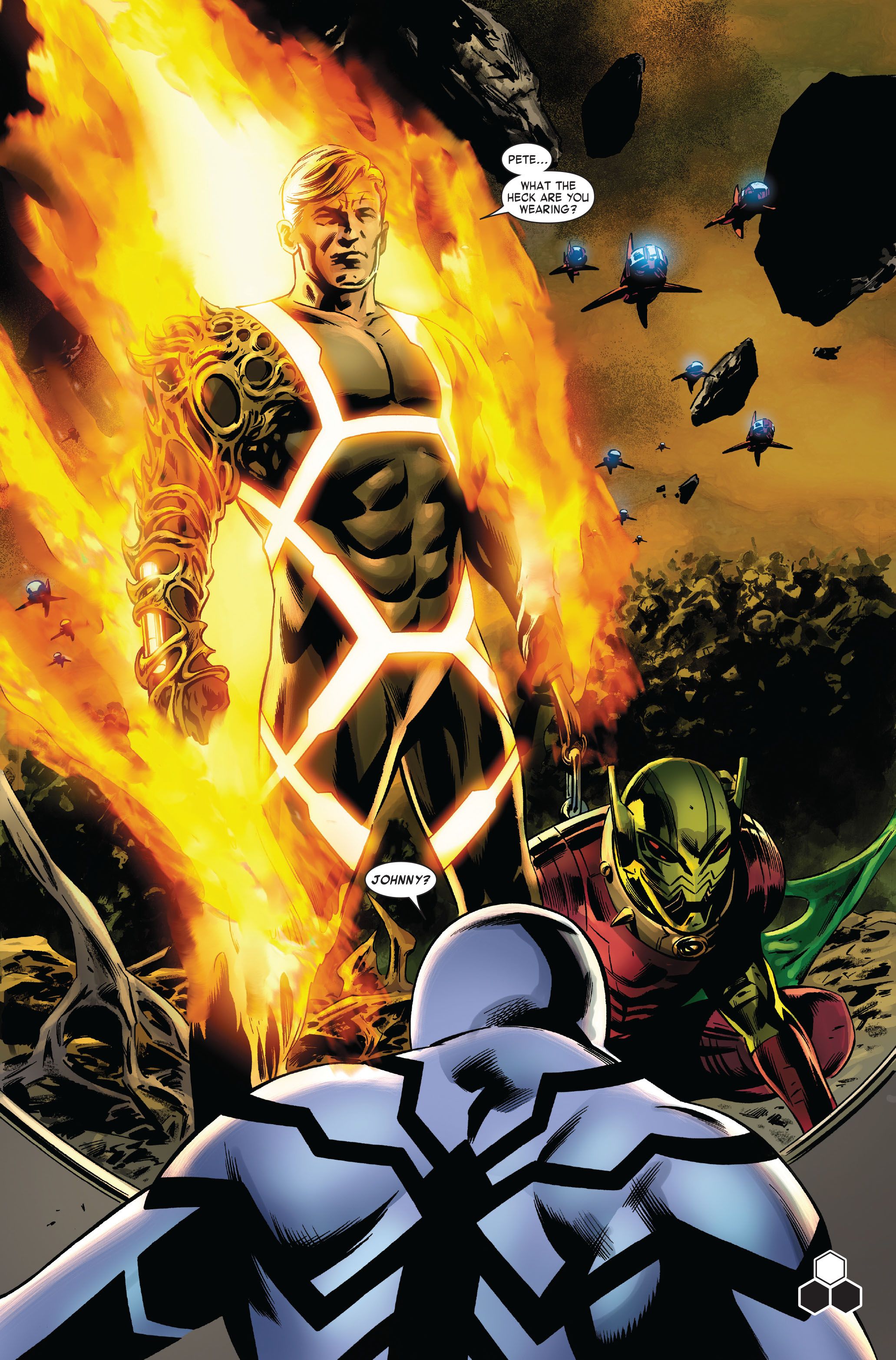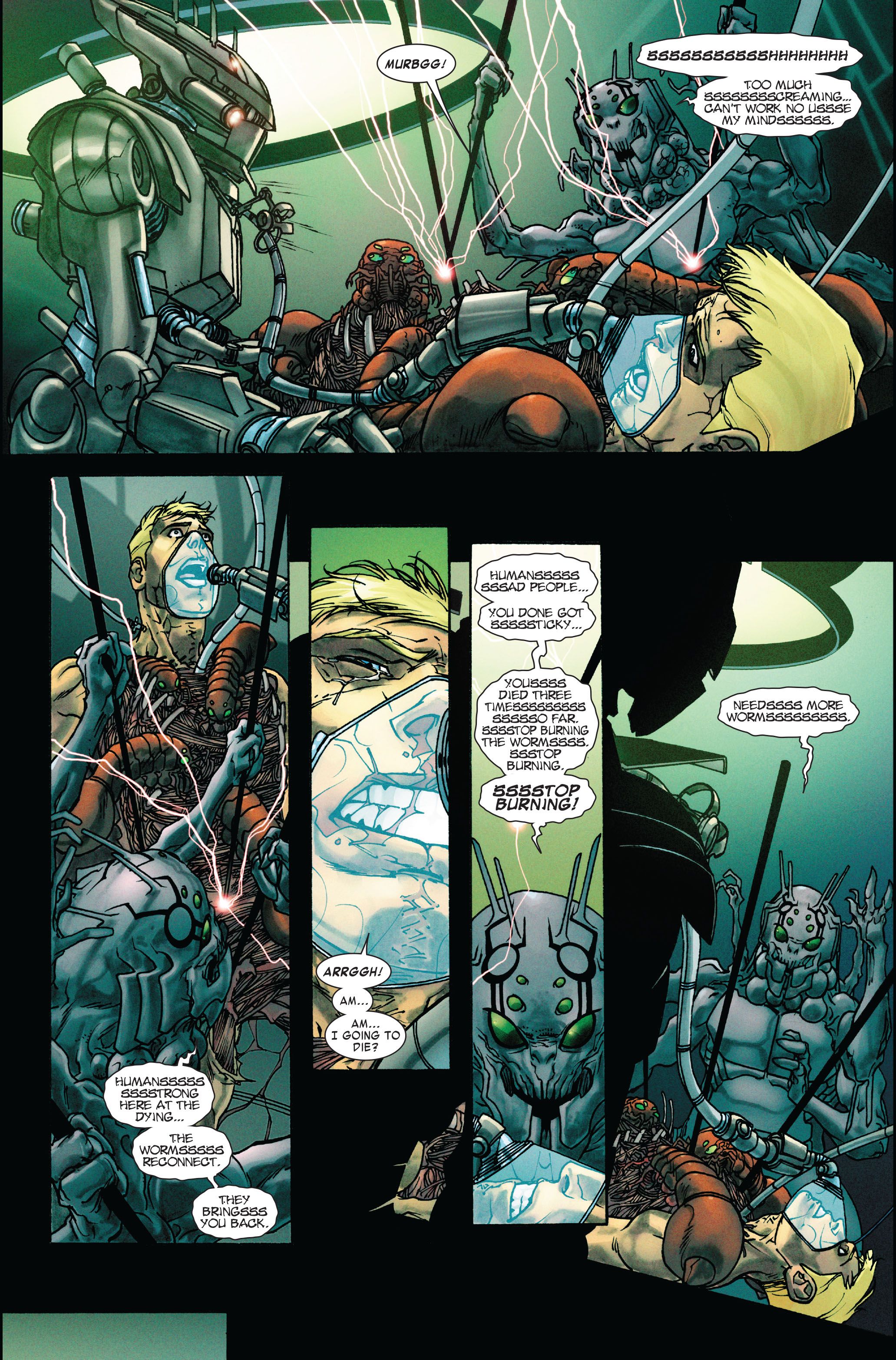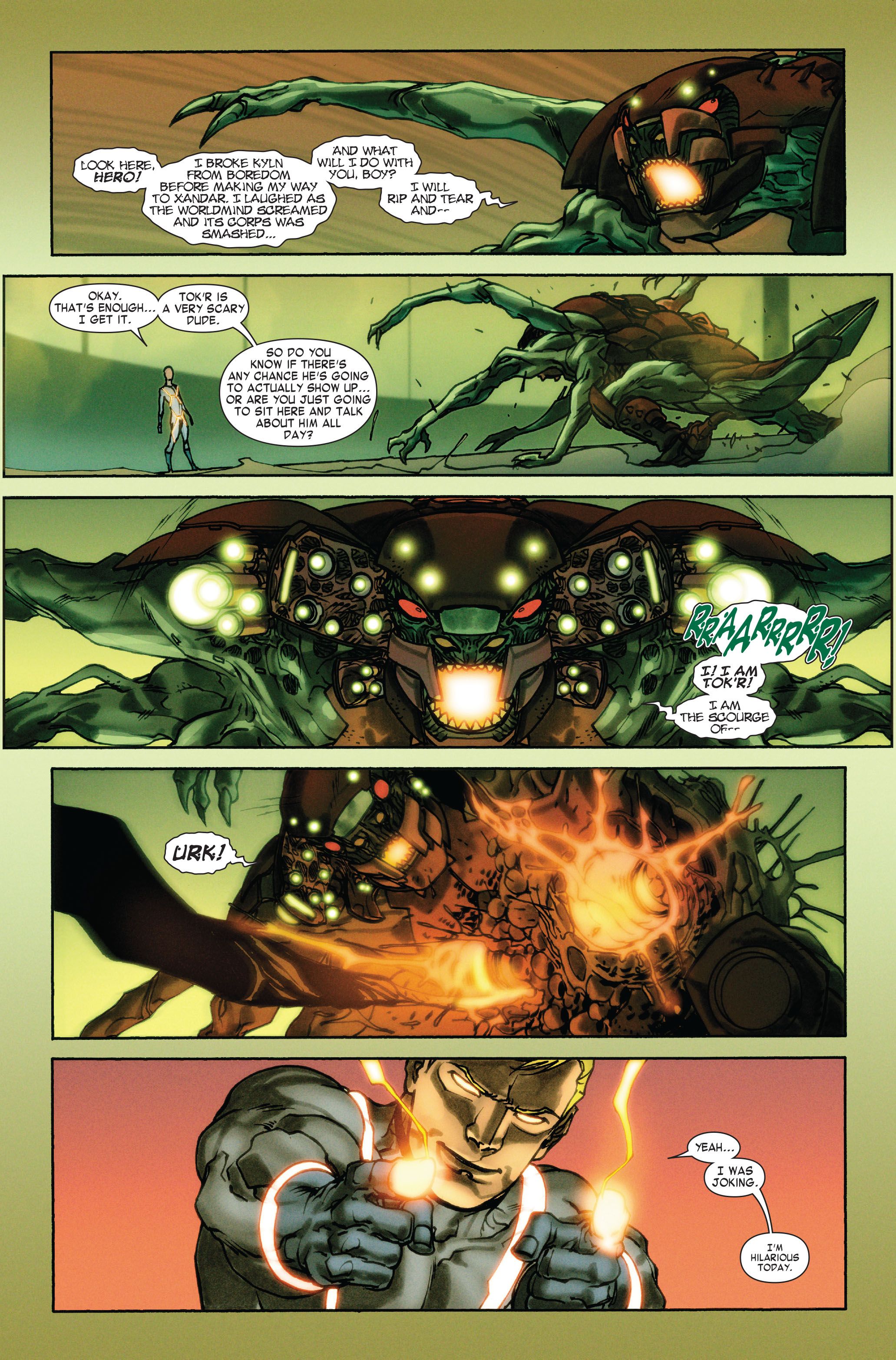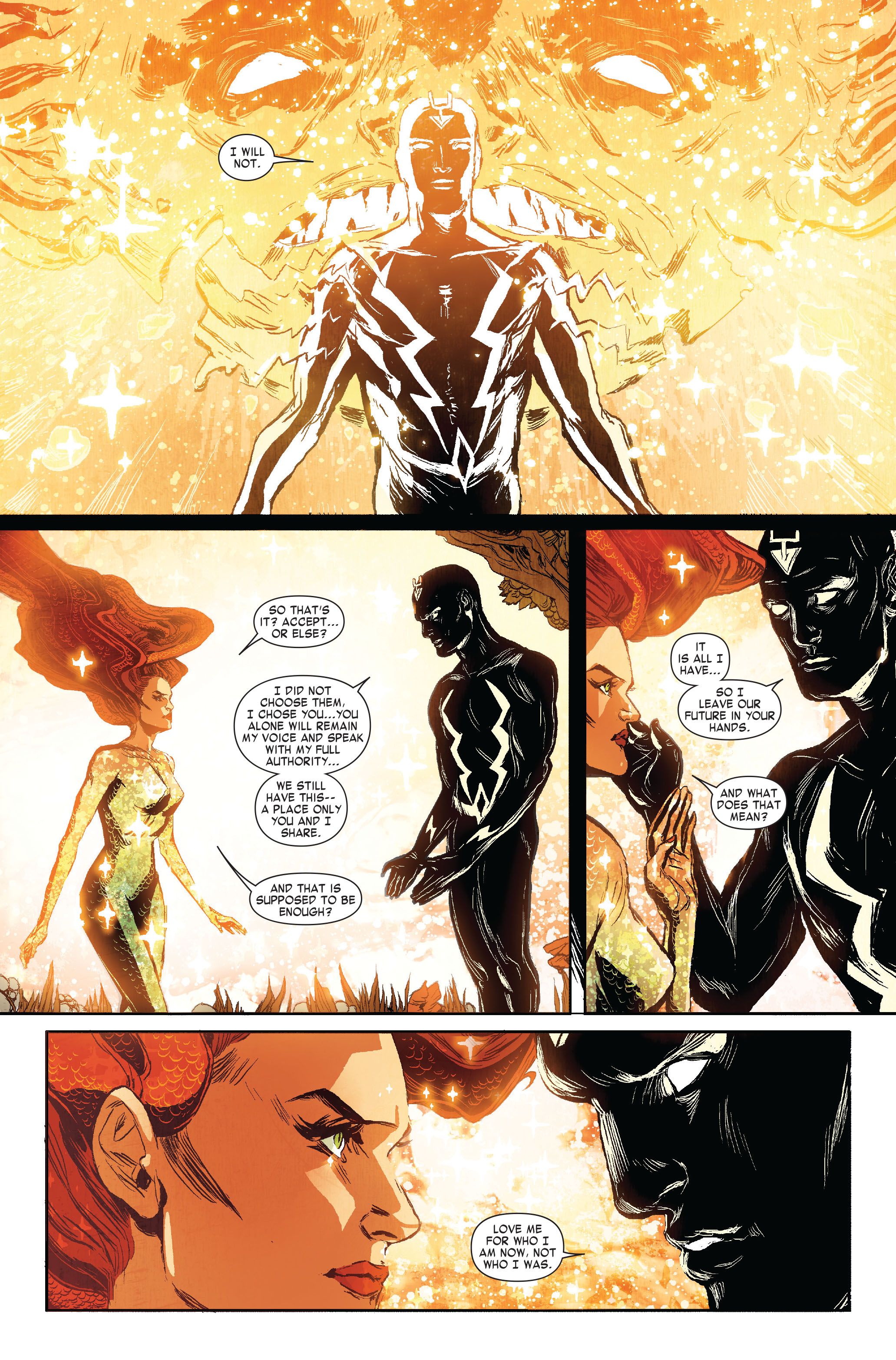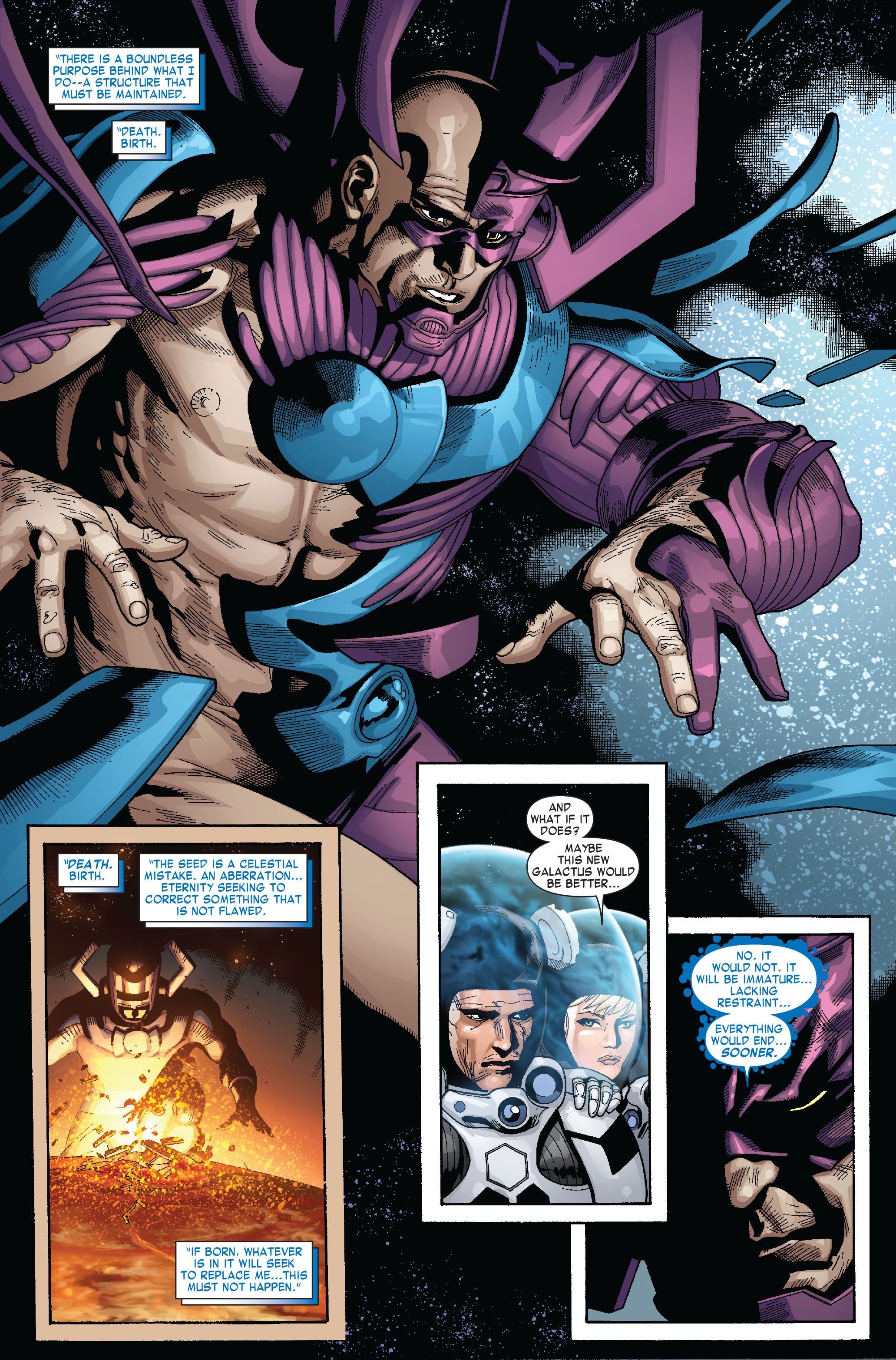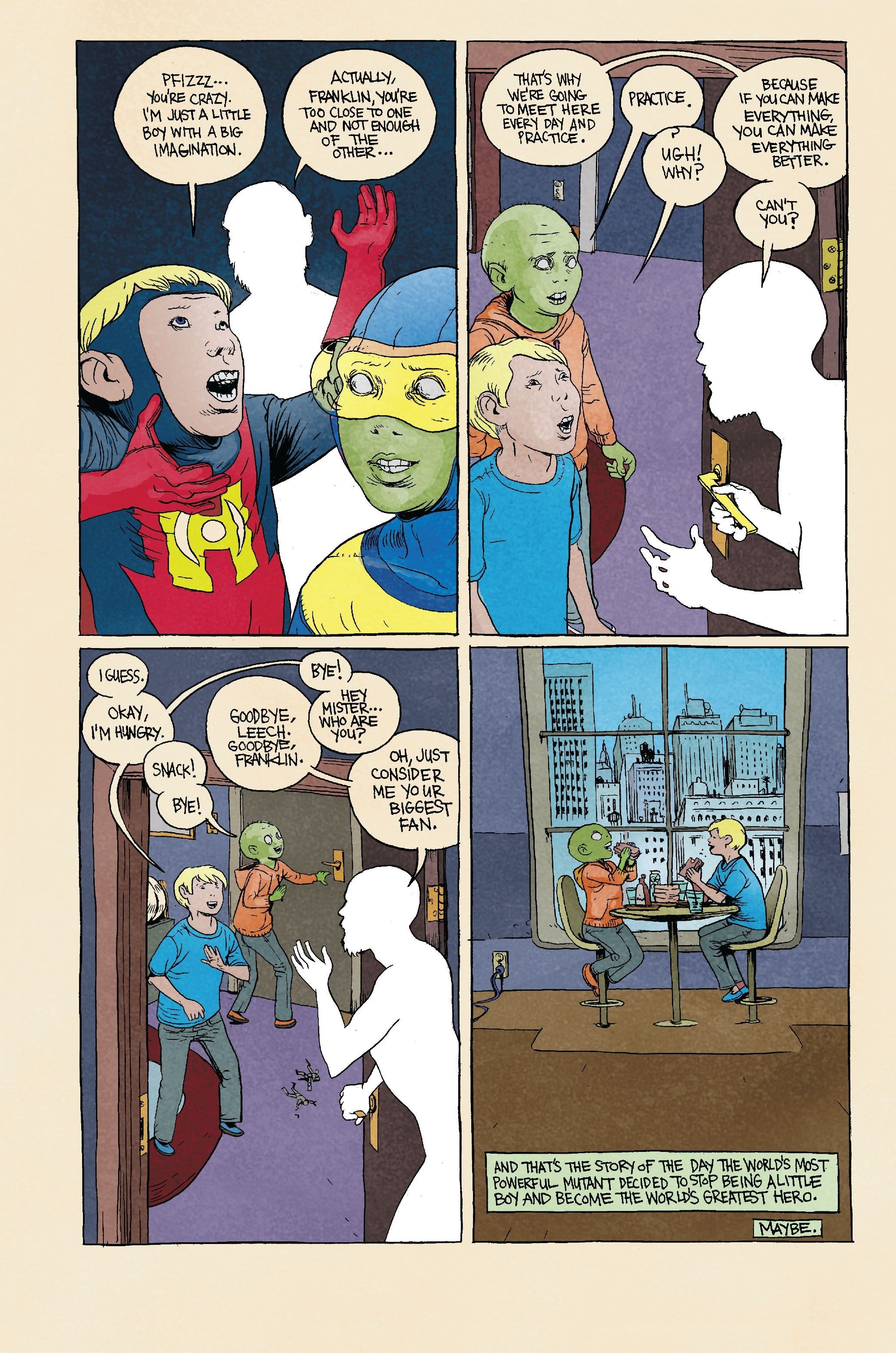Today, we look at the return of the Human Torch to the restore the original Fantastic Four!
This is "Look Back," where every four weeks of a month, I will spotlight a single issue of a comic book that came out in the past and talk about that issue (often in terms of a larger scale, like the series overall, etc.). Each spotlight will be a look at a comic book from a different year that came out the same month X amount of years ago. The first spotlight of the month looks at a book that came out this month ten years ago. The second spotlight looks at a book that came out this month 25 years ago. The third spotlight looks at a book that came out this month 50 years ago. The fourth spotlight looks at a book that came out this month 75 years ago. The occasional fifth week (we look at weeks broadly, so if a month has either five Sundays or five Saturdays, it counts as having a fifth week) looks at books from 20/30/40/60/70/80 years ago.
Today, we go back to November 2011 for the return of the Human Torch in Fantastic Four #600 (by Jonathan Hickman, Steve Epting, Rick Magyar, Paul Mounts, Carmine Di Giandomenico, Andy Troy, Ming Doyle, Jordie Bellaire, Leinil Francis Yu, Gerry Alanguilan, Javier Tartaglia, Farel Dalrymple and Jose Villarrubia).
Actually, earlier this year, I wrote about the apparent death of the Human Torch!
Jonathan Hickman's run on the Fantastic Four began in Fantastic Four #570, and one of the main features in his run was the establishment of the Future Foundation, a collection of the most brilliant young minds in the Marvel Universe (that were not already part of programs or schools elsewhere in continuity), particularly Valeria Richards, the daughter of Mister Fantastic and Invisible Woman.
Similarly, Hickman's run involved introducing "lost" civilizations that had some sort of tie to established Fantastic Four groups, including the Tribes of Old Atlantis.
Okay, so now that they were established, Hickman led up to the storyline "Three" (with gorgeous countdown cover art by the book's regular cover artist, the legendary Alan Davis), which introduced the concept that the Fantastic Four were going to encounter three different major threats, all based on old Fantastic Four set-ups, and that at the end of the event, the Fantastic Four would be down to three members due to one of the major threats leading to the exit of the member from the team (and presumably the mortal plane).
The Invisible Woman was sent to go deal with a conflict involving Namor and Atlantis and the Tribes of Old Atlantis, Mister Fantastic headed off to Nu-World (a world designed to hold the rich and powerful when Earth became too desolate to live on. Instead, a time machine was used to bring the citizens of a future barren Earth back to live on it. It was powered by the corpse of a future Galactus) when Galactus discovered how Nu World was powered and he was NOT happy. Finally, Human Torch, Ben Grimm (through the Future Foundation's help, Reed Richards had discovered a way for the Thing to become human for a week each year. Ben was still human) and the Future Foundation had to fight off a new Annihilation Wave from the Negative Zone.
The Human Torch then seemingly sacrificed himself to keep the Annihilation Wave from escaping the Negative Zone. So it was Johnny versus an entire Annihilation Wave, so he seemed to be dead for sure....but WAS he?
So the problem in the issue is that the Kree Armada is attacking Earth (and New York City in specific), so the heroes of Earth are all teamed up to stop it (Epting, Magyar and Mounts go all out in this superhero epic)...
Meanwhile, the same jerks who tried to open the gate to the Negative Zone back in "Three" are back at it and this time, they look like they're going to succeed. They get to the gate and Spider-Man shows up and tries to stop them but he fails. The Gate is opened and....omigod...it's JOHNNY!
This then brings us to the story of how Johnny is alive (art by Carmine Di Giandomenico and Andy Troy). As it turned out, he DID die, but in the Negative Zone, death is not the end, and he is brought back to life over and over again as Annihilus hopes that he can eventually get Johnny to open the gate.
In the meantime, Johnny is forced to fight as a gladiator for Anniilus' amusement...
When Johnny finds out that they are about to actually make it back to Earth, he and the other gladiators have to quickly conquer the Negative Zone to defeat the Annihilation Wave before it can start and they succeed, just in time for the agents on the other side to open the gate.
Meanwhile, we also get a spotlight (art by Ming Doyle and Jordie Bellaire) on how Medusa is dealing with the fact that she is now a "Sister wife"....
Galactus warns Reed about some spooky stuff ahead (art by Leinil Francis Yu, Gerry Alanguilan and Javier Tartaglia)...
and Franklin and Leech are visited by someone mysterious telling them to work on their powers in a super charming story with outstanding artwork by Farel Dalrymple and Jose Villarrubia...
What a great issue. As you may have recalled, once Johnny died, the book was rebooted as FF as there was no more Fantastic Four (with Spider-Man joining the team in Johnny's honor), but now that Johnny was back, the book was renamed Fantastic Four (although FF then continued as a companion book). This was such an excellent run by Hickman and it was almost over after this (perhaps I'll spotlight his finale in a future Look Back).
If you folks have any suggestions for November (or any other later months) 2011, 1996, 1971 and 1946 comic books for me to spotlight, drop me a line at brianc@cbr.com! Here is the guide, though, for the cover dates of books so that you can make suggestions for books that actually came out in the correct month. Generally speaking, the traditional amount of time between the cover date and the release date of a comic book throughout most of comic history has been two months (it was three months at times, but not during the times we're discussing here). So the comic books will have a cover date that is two months ahead of the actual release date (so October for a book that came out in August). Obviously, it is easier to tell when a book from 10 years ago was released, since there was internet coverage of books back then.

